The Gift of South Dakota
Subscriptions to South Dakota Magazine make great gifts!
Subscribe today — 1 year (6 issues) is just $29!
Rocks, Rolls and Rivers
Jul 14, 2015
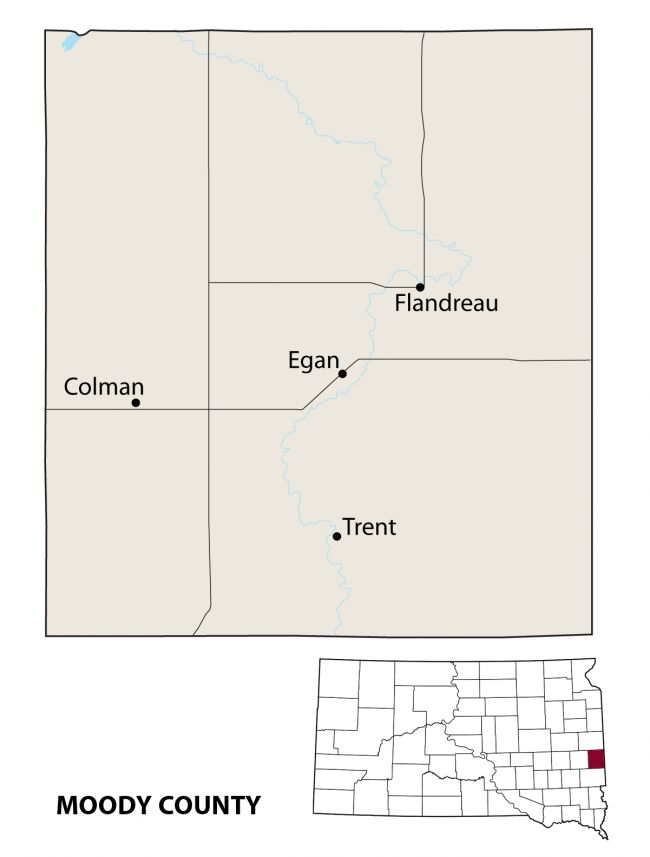 |
If you took a road trip around South Dakota with the goal of seeing one — and only one — thing in each of South Dakota’s 66 counties, where would the intrepid editors of South Dakota Magazine send you in Moody County?
We asked ourselves that very question in the summer of 2011, when we wrote an extensive travel feature based on the idea of seeing one unique spot in every county. There were some fascinating places: 19th century cabins and churches, wildlife refuges, public art displays and beautiful sections of the Missouri River known only to locals.
And what did we select for Moody County?
A rock.
Yes, a rock. But it’s a really big rock with a story that’s 1.8 million years old. Lone Rock is one of millions of stones deposited by glaciers as they scraped across present-day South Dakota, but this one stands out. The boulder is 25 feet high and is estimated to weigh 100 tons — and that’s just the part you can see. Locals think another 50 to 75 tons remain buried beneath the prairie. Lone Rock became a travelers’ landmark and a favorite picnic spot for locals since the late 1880s. If you want to see the king of glacial erratics, Lone Rock lies in a pasture near the corner of 487th Avenue and 235th Street, southeast of Flandreau and less than a mile from the Minnesota border.
 |
| Lone Rock has been a landmark in southeastern Moody County for centuries. |
Who knows if Gideon Moody ever saw Lone Rock, or how much time he actually spent in the county that was created and named for him in 1873? Moody was one of several territorial politicians for whom counties were named, but he was probably the only one who narrowly avoided a knife fight with a colleague. It happened while Moody served in the Indiana legislature in 1861. The body was debating states’ rights, an especially controversial pre-Civil War issue. One legislator attacked the governor and Moody came to his defense so vociferously that he was challenged to a duel using bowie knives. They crossed the border into Kentucky to consummate the challenge and were promptly arrested and fined $500 each. The bowie knives remained in their sheaths.
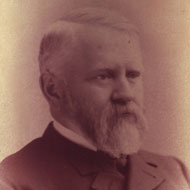 |
| Gideon Moody. |
Moody’s fighting spirit (at least in the physical sense) abated when he came to Dakota Territory with his family in 1864 to supervise construction of the Sioux City to Fort Randall military road. When he discovered the road could be built for far less than the money already appropriated, he paid the farmers he had recruited to work on it double the money originally intended. It raised the ire of the federal government, but he earned the respect of thousands of South Dakotans.
Moody served in the House of Representatives, was a judge in Deadwood and became one of our first U.S. Senators in 1889. He cultivated an unparalleled reputation for honesty. During one court case in Deadwood, litigants worried over the trial’s probable outcome against them tried to find someone who would bribe Judge Moody. They found an old law partner of Moody’s from North Dakota and brought him to town. When he heard their plan, he shouted, “My God, men! Do you expect me to tackle that man on any such proposition? Why, I should be in the penitentiary in 48 hours. If that is what you got me here for, I might as well leave for home on the coach tomorrow.” And he did.
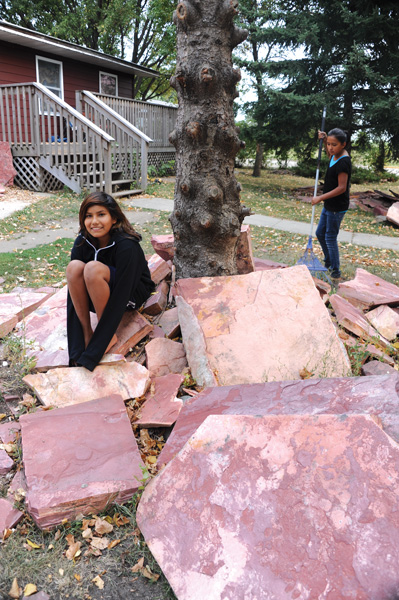 |
| Grace (seated) and Gabby Flute Player enjoy a front yard decorated with pipestone in Flandreau. Their father, Rick Flute Player, uses the stone quarried from the Pipestone National Monument in Minnesota, to create ceremonial pipes. |
When he faced defeat in his bid for re-election to the Senate in 1891, several legislators suggested supporting Moody in exchange for certain privileges. “He told them that if one dollar were used in buying a vote for him he would refuse to qualify for the office or accept it, and more, that he would assist in prosecuting both the man offering the money and the man accepting it,” wrote state historian Doane Robinson.
Moody ultimately lost the election. He practiced law before moving to California in 1900. He died four years later.
Today about 6,500 people call Moody County home. Its biggest city is Flandreau, where the citizenry is a mix of the descendants of European homesteaders and the Flandreau Santee Sioux Tribe. After the Dakota Uprising in Minnesota in 1862, several Santee Sioux were relegated to the Santee Agency in Nebraska. Seven years later, a delegation of them left and decided to settle on a bend in the Big Sioux River.
Flandreau boasts both public and Indian schools, and the Royal River Casino and Hotel draws people from hundreds of miles. If you are passing through, don’t miss the Long John’s at the Flandreau Bakery or the large paintings inside the auditorium by Brookings artist Dorothy Lyford, who was commissioned to illustrate the city’s history. The historic St. Vincent Hotel has also been restored. It’s where John Dillinger stayed while planning his robbery of the Sioux Falls Security National Bank in 1934.
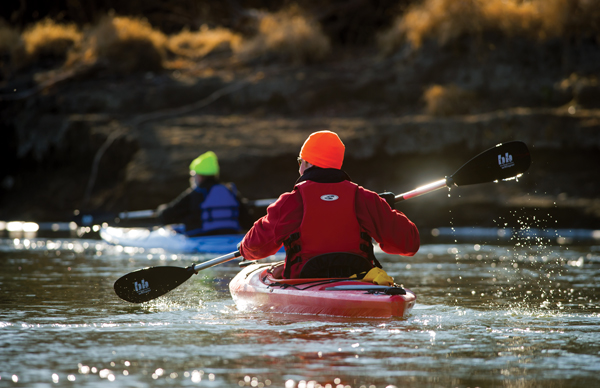 |
| The Big Sioux River's shallow depths make it an easier river to kayak. Photo by Greg Latza. |
Take advantage of the outdoors by paddling the lazy Big Sioux River, which snakes through Moody County. Kayaking enthusiast Jarrett Bies told us the river is perfect for paddlers of all skill levels. “The Big Sioux is a pretty easy river to paddle, because if you have a mistake or you tip over, your number one strategy is to just stand up because you’re probably in knee-deep or waist-deep water,” Bies says. “If you tipped on the Missouri, you’d face a much more complex rescue.”
One of his favorite stretches follows the big horseshoe bend. Start at the access point at the pow wow grounds about a mile north of Flandreau on Highway 13. The river flows east toward Minnesota before curving south and west, past the Flandreau city park to a low-head dam in town. “It’s a five minute drive from the pow wow grounds to the dam, but you get a three-hour paddle on 12 to 14 miles of river,” Bies says.
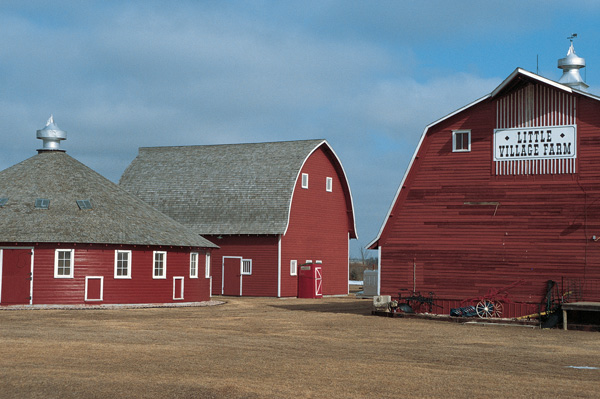 |
| Jim and Joan Lacey's Little Village Farm is an eclectic collection of farm equipment and memorabilia. |
You can also portage around the dam and continue south for another three-hour paddle to Egan. Stop at the access point in the city park, or continue south to Dell Rapids. This course features farmland, abundant wildlife, woodland areas and rugged red quartzite canyons.
Outdoorsmen like to stay at the River of the Double Bend Campground and Outfitters near Trent. Owner Morris Kirkegaard is a life-long Big Sioux River rat, full of stories about his experiences.
Another unique destination just outside of Trent is Jim and Joan Lacey’s Little Village Farm. The Laceys have moved several large barns onto their property to house the enormous collection they’ve amassed over the years — tractors, windmills, cream separators, lightning rods and other farm equipment.
A day in Moody County might begin with rolls at the Flandreau Bakery, then a round of golf at Sunrise Ridge Golf Course on the south edge of Colman. Spend a quiet afternoon at the city park in Egan and have a thick, juicy steak at the Feather’s Nest in Ward. Finish it off with a float on the Big Sioux or a campfire with the Kirkegaards.
And if you see any other rocks you think we ought to know about, give us a call.
Editor’s Note: This is the sixth installment in an ongoing series featuring South Dakota’s 66 counties. Click here for previous articles.


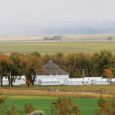







Comments